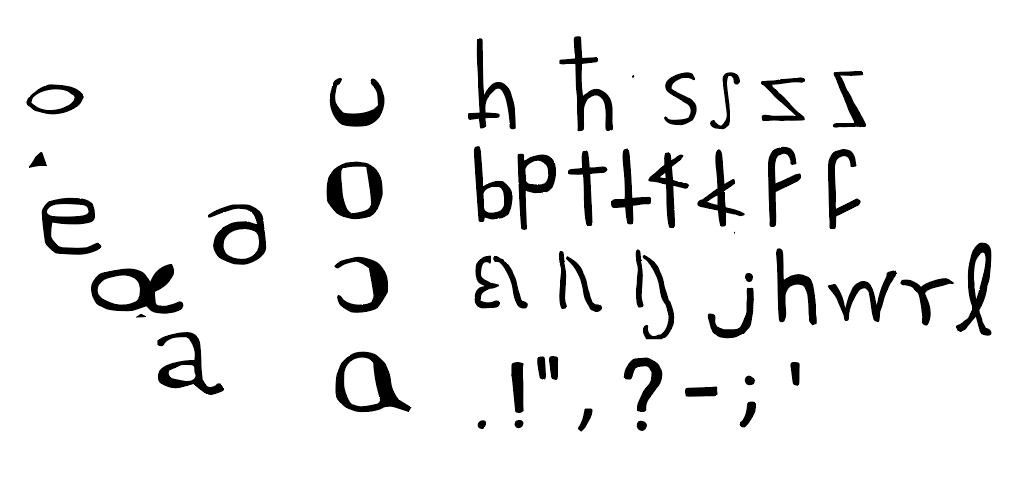 The current version includes 32 unique glyphs representing 38 phonemes, including 10 vowels and 22 other sounds. Through modifying the symbology, the goal is to make phonemic representation more accessible while remaining useful for a wide audience. In particular, the following features are conveyed pictorially.
The current version includes 32 unique glyphs representing 38 phonemes, including 10 vowels and 22 other sounds. Through modifying the symbology, the goal is to make phonemic representation more accessible while remaining useful for a wide audience. In particular, the following features are conveyed pictorially.